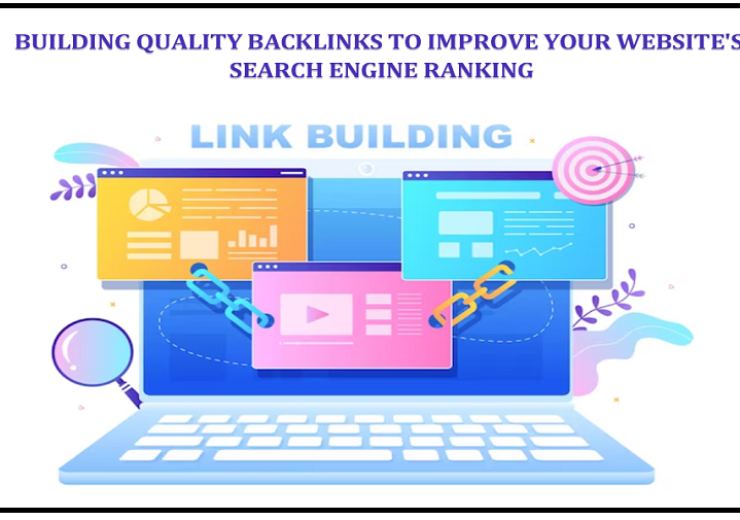Top SEO Techniques to Boost Your B2B Marketing Efforts

In the Bombastic field of B2B Marketing, it’s absolutely essential that you have a sound SEO strategy in place to maintain visibility, attract high-quality leads, and create conversions. This is an in-depth guide to the top SEO techniques that can drastically enhance your efforts in B2B marketing.
1. Know Your Target Market
——————————————–
This will form the backbone of not only your B2B marketing but of your SEO strategy as well. In-depth market research will help you understand what your potential clients may need, like and dislike, or what may be their pain points. Which detailed buyer personas will help you direct your words and audience in a way that your efforts resonate?
What are the pains and major problems of your prospects?
- Who are your ideal clients?
- What solutions do they need?
- What channels to find information do they use?
- Use research tools, surveys, interviews, and analytics to collect insights. The more granular your knowledge about your audience, the better your SEO will be.
2. Do Effective Keyword Research
——————————————–
Keyword research forms the very base of success in SEO. Focus on the long-tail and more industry-specific keywords in relation to your business and services. Some tools that will be helpful are the Google Keyword Planner, Ahrefs, and SEMrush; try to find if any keywords have high search volumes with low competition.
Effective Steps for Doing Keyword Research
- Brainstorm Seed Keywords: Start with the beginning broad terms regarding your business.
- Build Upon the List: Find more related keywords or phrases using keyword research tools.
- Analyze Keyword Metrics: Browsing through search volume, keyword difficulty, competition.
- Choose Target Keywords: Select keywords that coherently fit the search intent of your audience and your business goals.
- Integrate Keywords: This is where you go ahead and pepper the keyword naturally in your website content irrespective of the keyword you have chosen, ensuring you allow better ranking capabilities without making it look spammy.
Targeting the correct keywords helps to drive more qualified traffic and better search engine rankings.
3. Mobile Optimization
——————————————–
With most users landing on websites via mobile phones, websites should be optimized for mobile. Google, too, has moved to a mobile-first index, putting the mobile version of your site as the first version the search engine sees for ranking and indexing.
Make It Mobile-Optimized with the Following Hacks:
- Responsive Design: Ensure the website is configured to change its layout to align with the various screen dimensions.
- Fast Loading Speeds: Optimize images, leverage browser caching, and minimize code.
- User-Friendly Navigation: Just simplify the menu and make the buttons clickable.
- Mobile-Friendly Content: Enlarge fonts, shorten paragraphs, and ease on the images for mobile.
A mobile-friendly website improves user experience, reduces bounce rates, and positively impacts your rank on search engines.
4. Quality Content
——————————————–
Remember, content is king in the SEO domain. Create top-notch, informative, and engaging content that speaks to the needs and desires of your B2B target audience. Consistently post articles, case studies, whitepapers, and infographics offering insights and solutions on the blog.
Strategies for Content Creation
- Identifying Audience Needs: Create content that answers their common questions and solves their problems.
- Maintaining Quality: Make sure your content is thoroughly researched, well written, and error-free.
- Info in Various Formats: Share your content in the form of blog posts, videos, infographics, and podcasts.
- Keep on Updating: Keep on refreshing your content continually. Do update old posts and also add new blog posts from time to time.
Offer good quality content; this will help in setting up the authority status of your business in the industry and also help to build loyal audience base.
5. On-Page SEO Techniques
——————————————–
On-page SEO refers to optimizing every single web page in order to rank higher in the search engines. This involves optimizing title tags, meta descriptions, header tags, and alt text.
Some on-page SEO tips:
- Title tags: Write a compelling, keyword-optimized title for each page.
- Meta descriptions: Write a clear, to-the-point meta description to make someone want to click. Keep it to tweet length to stay at the top of best practices. End.
- Alt Text: Make the image more accessible and search engine-optimized by making the alt text descriptive.
On-page SEO will make it easy for search engines to decipher your content and increase the likeliness of ranking you higher in the search results.
6. Build Quality Backlinks
——————————————–
Quality sites linking back to your website act as a signal that your content can be trusted upon by the search engines. Find high-quality backlink opportunities by guest-posting, doing partnerships, and creating content crossovers.
Ways to Build Backlinks:
- Guest Posting: Draft and publish blog posts for leading sites in your niche.
- Partner with Influencers: Collaborate with influencers to promote your content in and around your industry.
- Create Link-Worthy Content: Develop original, preeminent quality content that others would like to link to.
- Engage in Online Communities: Participate in online niche forums and discussions.
Black-hat SEO practices, like buying links, do more harm than good to your rankings—so stay clear of them.
7. Optimize for local SEO
——————————————–
Local SEO: If your B2B company operates in definite locations, local SEO can boost their visibility in the area. Claim and make the most of your Google My Business listing, encouraging client reviews in the process, and make use of location-based keywords, making sure your name, address, and phone number (NAP) is consistent across all platforms online.
Some of the effective local SEO tips are:
- Google My Business: Ensure correct information is always updated in the listing.
- Client Reviews: Encourage the leaving of positive reviews by satisfied clients.
- Local Keywords: Keywords that include the area.
- NAP Consistency: Name, address, phone number—make sure these are consistent everywhere.
Local SEO helps these companies get found by people looking for these businesses in their locality.
8. Monitor and Measure
——————————————–
Measure performance on a regular basis using Google Analytics and Google Search Console, among other SEO measurement tools. Monitor crucial metrics such as organic traffic, bounce rate, or conversions for evaluation or indications of a potential need to tweak strategies.
Performance Tracking TIPS
Configure Google Analytics and Google Search Console for setting up analytics tools to measure site performance.
- Key Metrics: Focus on some of the major key metrics included in your business goals, getting massive organic traffic, and conversion rates.
- Analysis of Data: Get your data to pinpoint trends, find out problems, and make informed decisions.
- Refine your Strategy: Continuously revise your plan based on the conclusions you get.
By tracking and analyzing your performance, you can continually improve your SEO efforts and achieve better results.
Frequently Asked Questions
——————————————–
1. What is the purpose of SEO in B2B marketing?
SEO in B2B marketing increases online visibility, drives the right traffic, and in the process, generates leading potentials for the business. Working strategies in SEO for service-based businesses ensures that the services are found by the prospective clients, who are looking for the best solution to their problems.
2. How is keyword research different in B2B marketing?
In the case of B2B marketing, it involves long-tail keywords and industry or product-specific keywords. B2B companies will also use more focused and nuance keywords in expressing a particular business need and service.
3. Why would a mobile optimization be critical to websites?
Mobile optimization would be critical to websites since a large part of the web traffic comes from mobile devices. Google that employs a mobile-first indexing considers the company’s mobile site version as their main site version, and this influences how they rank in search results.
4. How do I manage building quality backlinks to my B2B website?
Develop quality backlinks by posting valuable content to relevant sites, guest posting, collaborating with influential people, and going to industry-related online forums. Target links from the authoritative and relevant domains.
5. What tools can best help me for SEO performance tracking and enhancement?
Tools like Google Analytics, Google Search Console, Ahrefs, SEMrush, and Moz are great and really effective in monitoring and optimizing your search performance. These tools can help you track important metrics, keyword rankings, backlink profiles, and the overall state of your website.
Conclusion:
Effective SEO allows you to go a long way in boosting your B2B marketing campaign. You can very well boost your search rankings and, hence, pull more high-quality leads by understanding your target audience, carrying out diligent keyword research, optimizing your site for mobile, creating quality content, applying on-page SEO techniques, creating quality backlinks, using local SEO, and tracking your performance constantly. Implement these strategies to stay ahead of the competition in the B2B marketplace.




